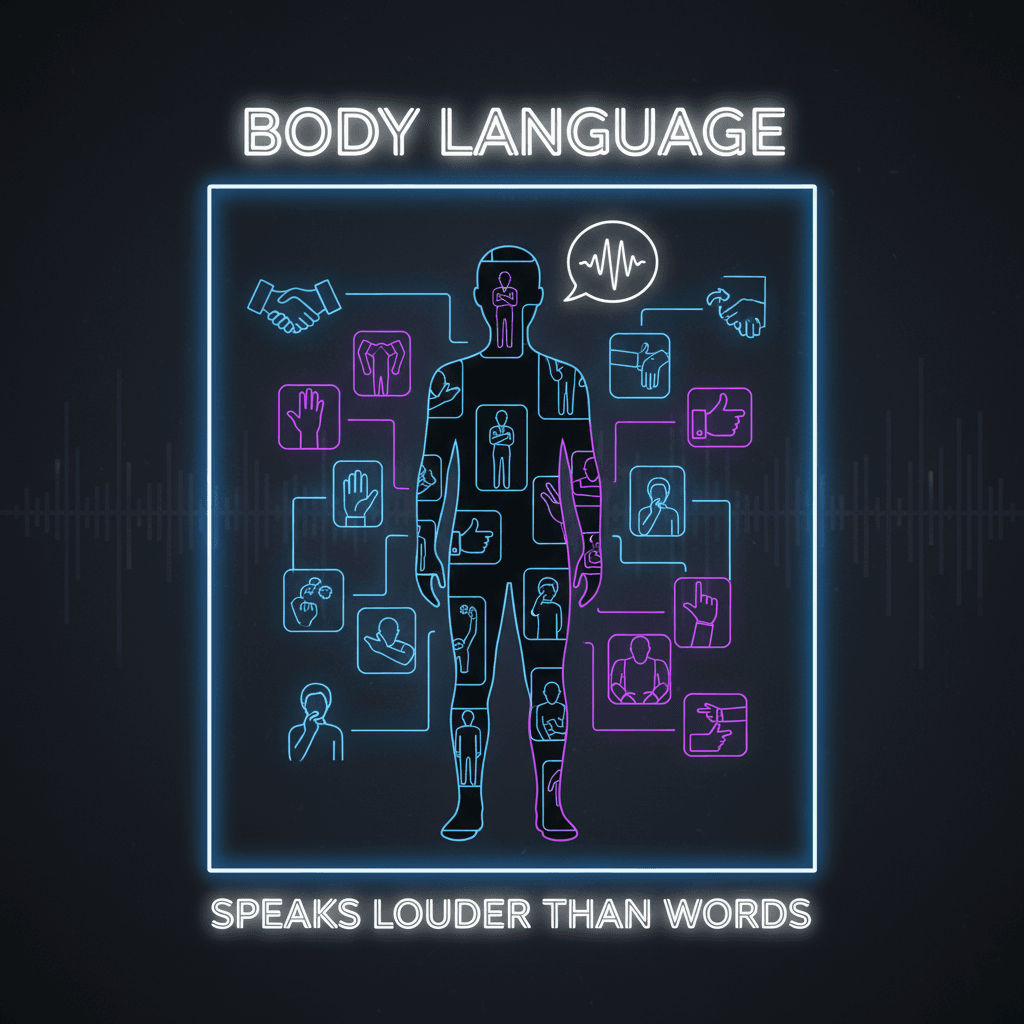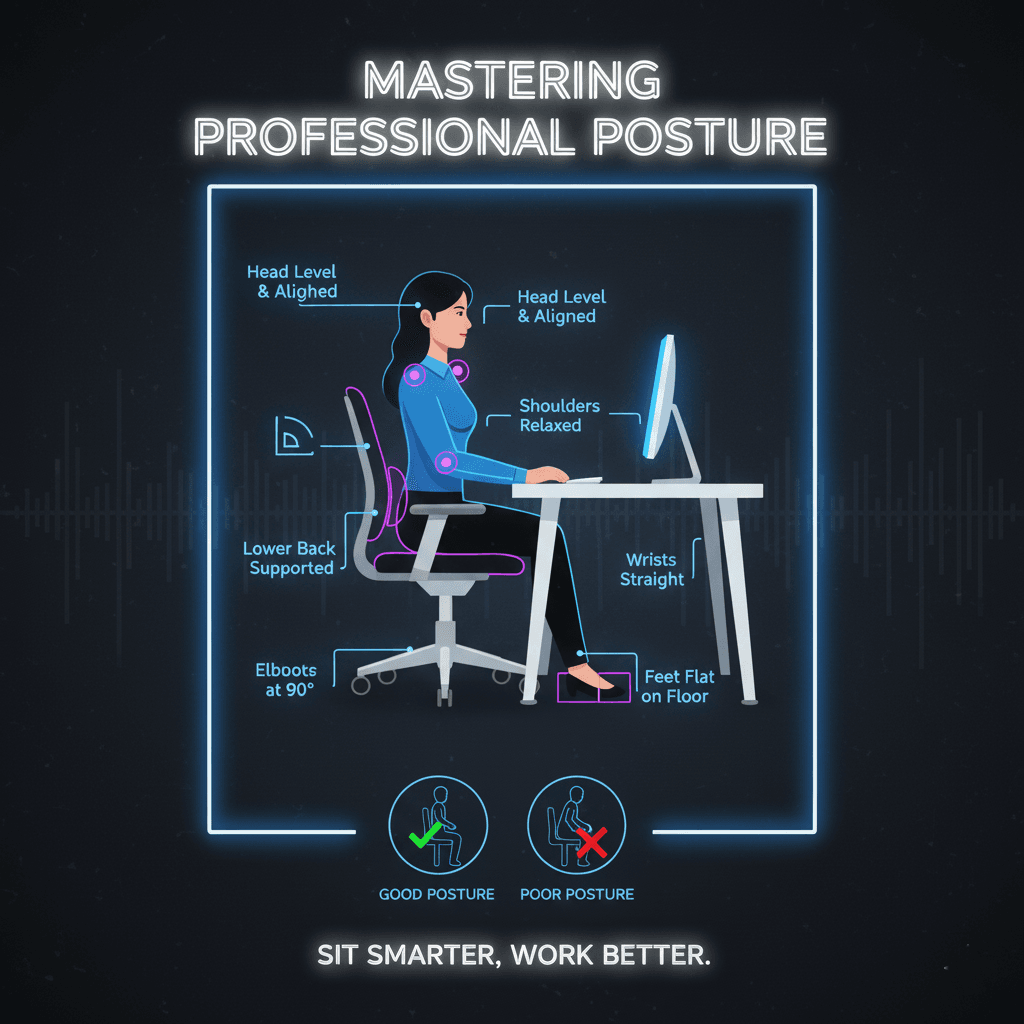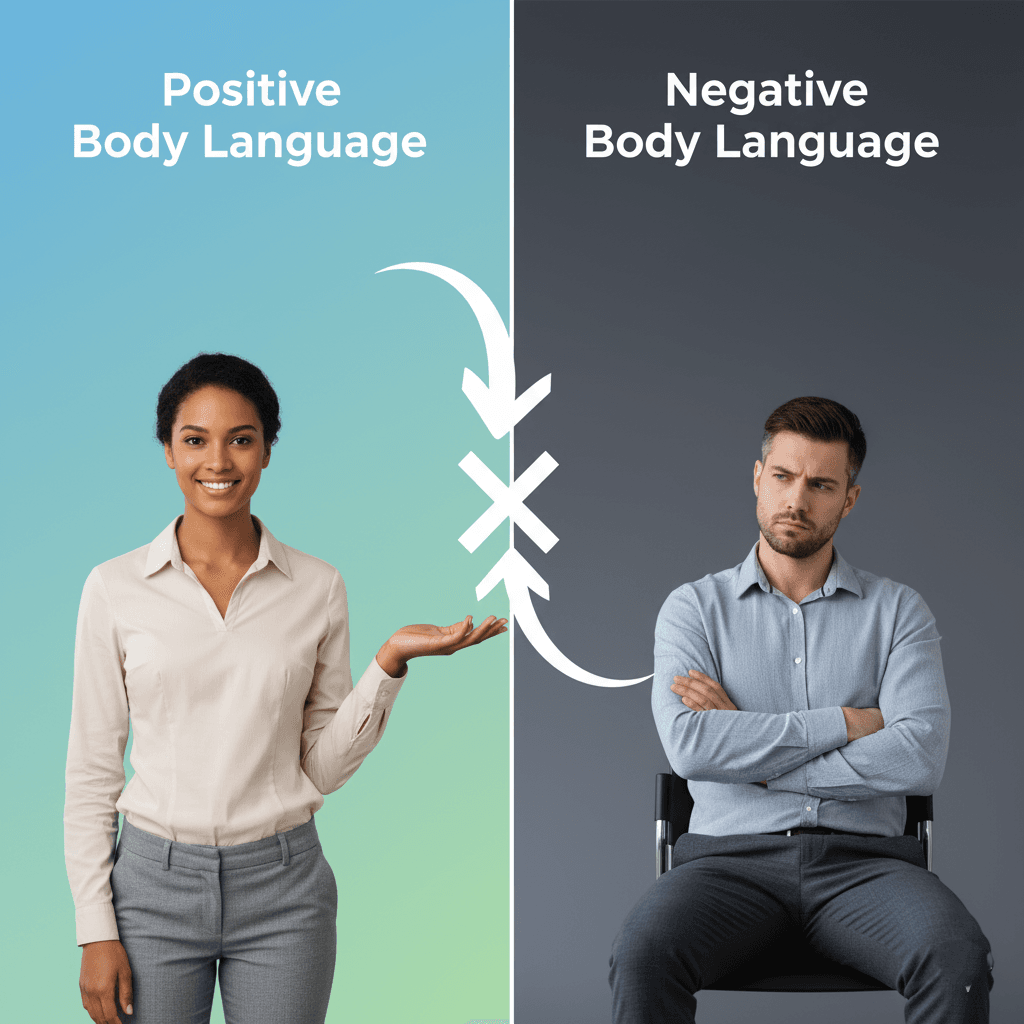Power of Body Language in Communication: 10 Ways Clapingo Elevates Your Skills
Discover how body language in English shapes communication. Learn non-verbal communication tips, gestures, and expressions with Clapingo’s expert guidance.

Body Language Is Powerful
Why Body Language Matters More Than You Think
When you speak English, your words are only part of the message. In fact, research shows that over 55% of communication is non-verbal. The way you stand, move your hands, smile, or even make eye contact—these all send signals.
If you’ve ever felt misunderstood despite saying the right words, the problem may not be your grammar—it may be your body language in English. This is where platforms like Clapingo step in, teaching you not just words, but the art of communication.
The Science of Body Language in English
Definition: Body language is the use of physical behavior, gestures, posture, and facial expressions to convey meaning.
Impact:
55% body language
38% tone of voice
7% actual words
Cultural Nuances: In India, nodding can mean agreement, but in some countries, it can be confusing. Understanding these differences is crucial when speaking English in global settings.
Common Elements of Body Language
Facial Expressions – Smile shows friendliness, frown shows confusion.
Eye Contact – Too little: lack of confidence; too much: aggressive.
Posture – Standing tall = confidence; slouching = disinterest.
Gestures – Open palms = honesty; crossed arms = defensiveness.
Tone and Pauses – Part of non-verbal communication.
Clapingo Non-verbal communication tip: Practice recording yourself on video while speaking English. Observe your posture, gestures, and expressions.

Body Language For Professional Success
Body Language in English for Professional Success
In Job Interviews – Maintain steady eye contact, nod occasionally, and smile naturally.
In Presentations – Use open hand gestures, stand tall, and avoid pacing nervously.
In Meetings – Lean slightly forward to show attentiveness, avoid checking your phone.
Clapingo Tip: Your body language can often be more convincing than your words in English conversations.
Common Body Language Mistakes (and Fixes)
Avoiding eye contact → Fix: Practice looking between eyebrows instead of directly at eyes if you feel shy.
Crossing arms → Fix: Keep hands lightly on table or open by your side.
Overusing gestures → Fix: Keep movements calm and purposeful.
Fake smile → Fix: Relax facial muscles and think positive thoughts.
Non-Verbal Communication Tips Across Cultures
Handshake vs. Namaste – Understand when to use each.
Personal Space – In some cultures, standing too close is seen as intrusive.
Gestures – A “thumbs up” is positive in India but offensive in some countries.
Mastering body language in English also means being aware of cultural contexts.
How Clapingo Helps You Improve Body Language in English
Clapingo isn’t just about grammar, it’s about real communication.
Live Sessions: Trainers give instant feedback on posture, gestures, and tone.
Mock Interviews: Learn how to project confidence through non-verbal communication.
Cultural Guidance: Understand how body language is perceived globally.
Video Practice: Record yourself, get corrections, and refine body language.
Clapingo ensures you don’t just “speak English”, you communicate effectively.
Tips and Tricks for Better Body Language in English
Smile genuinely when greeting people.
Maintain eye contact for 3–5 seconds.
Keep your hands visible, not hidden in pockets.
Stand with feet shoulder-width apart for balance.
Use pauses and nods to show attentiveness.
Clapingo Quick Trick:
Practice your English speech in front of a mirror to observe your facial expressions and gestures.

Body Language Tricks
Did You Know?
93% of communication is non-verbal (Mehrabian’s rule).
A confident handshake increases the chances of making a positive impression by 40%.
People who smile often are perceived as more trustworthy and approachable.
Do’s and Don’ts of Body Language in English
Do’s | Don’ts |
|---|---|
Maintain steady eye contact | Avoid staring aggressively |
Smile naturally | Don’t fake expressions |
Stand tall with shoulders back | Slouch or hunch over |
Use open hand gestures | Cross your arms or hide hands |
Nod to show attentiveness | Fidget or tap excessively |
Best Practices for Confident Non-Verbal Communication
Practice posture exercises daily.
Mirror practice: rehearse speeches in front of a mirror.
Record yourself speaking and review gestures.
Align gestures with words for emphasis.
Maintain consistency in tone, facial expression, and movement.
Things No One Tells You About Body Language
Small hand movements can convey authority.
Leaning slightly forward shows interest but don’t invade space.
Pausing after a question conveys confidence.
Silent gestures often speak louder than words.
Your voice tone changes perception even if posture is correct.
Micro-Expressions That Make a Difference
Quick eyebrow raise = surprise or curiosity.
Slight head tilt = interest and empathy.
Lip compression = disagreement or hesitation.
Subtle shoulder shrug = uncertainty or politeness.
Clapingo Tip: Trainers can help you recognize and adjust these micro-expressions during conversations.
Body Language for Virtual Meetings
Camera angle: Keep it eye-level.
Avoid looking away too often; simulate eye contact by looking into the camera.
Use hand gestures within frame to emphasize points.
Smile naturally at key moments to show engagement.
How Gestures Can Reinforce Words
Pointing subtly adds emphasis.
Open palms = honesty.
Counting fingers to organize points visually.
Avoid repetitive gestures that distract from speech.
How Clapingo Uses Video Feedback
Record your speech in real-time.
Trainers highlight posture, gestures, and expressions.
Personalized tips for improvement.
Track progress over weeks.
Non-Verbal Communication in Networking
Firm handshake + smile = lasting impression.
Lean in slightly to show interest in conversation.
Avoid crossing arms, which may signal disinterest.
Mirror subtle gestures to build rapport.
Power Poses That Boost Confidence
Standing with feet shoulder-width apart, hands on hips.
Sitting upright with open arms.
Slight backward lean with chin up.
Practice power poses before interviews or presentations.
Secrets Professionals Use That No One Talks About
Professionals subtly nod while listening to encourage speakers.
They maintain relaxed yet alert posture to command attention.
Controlled breathing reduces nervous gestures.
Strategic pauses make their words impactful.
Awareness of body language in others helps guide responses.
Body Language During Introductions
First impressions matter. When introducing yourself in English, your body language often speaks louder than words. Stand tall with shoulders back and chin slightly up. Smile naturally and maintain steady eye contact. Use a confident handshake if culturally appropriate, or a gentle nod if not. A slight forward lean signals interest and engagement.
Clapingo Tip:Clapingo trainers often suggest practicing introductions in front of a mirror or camera to notice subtle gestures that affect impressions.
Reading Others’ Body Language
Learning to interpret others’ non-verbal cues is as important as controlling your own. Notice crossed arms—it may indicate defensiveness or discomfort. Watch facial expressions to gauge agreement or confusion. Observe posture; leaning forward often signals engagement, while slouching may indicate disinterest.
Clapingo Non-verbal communication tip: During conversations, try noting 2–3 cues from the other person before responding; it makes your interaction more empathetic and effective.
Subtle Signals That Show Confidence
Confidence isn’t just spoken—it’s felt through posture and micro-movements. Slow, deliberate gestures convey calmness. Controlled breathing prevents nervous fidgeting. A relaxed smile and steady gaze make you appear approachable yet assertive.
Clapingo Exercise: Trainers ask students to give a short 2-minute talk, focusing on gestures and posture. Feedback highlights subtle signals that may contradict confidence.
How to Avoid Nervous Habits
Many learners fidget, tap their feet, or overuse gestures when nervous. These habits reduce credibility. Instead:
Keep hands free and relaxed.
Ground your feet flat on the floor.
Slow gestures deliberately to match speech rhythm.
Clapingo Tip: Practice breathing exercises before speaking to minimize nervous energy.
Eye Contact Techniques
Eye contact balances attentiveness and comfort. Use the triangle method: alternate between the person’s eyes and mouth subtly. Maintain contact for 3–5 seconds, then glance away briefly. Avoid staring—this can feel aggressive.
Did You Know?
In Western business culture, failing to maintain eye contact can be perceived as untrustworthiness.
Smile Strategically
Smiling is a universal gesture of friendliness, but authenticity is key. Smile when greeting, after making a key point, or during casual conversation. Avoid forced or continuous smiles, which may appear fake.
Clapingo Tip: Record practice sessions to observe how your smile affects perception and naturalness.

Non-Verbal Cues Can Build Trust
Posture That Commands Respect
Standing or sitting tall conveys authority and engagement. Feet shoulder-width apart, shoulders relaxed but back straight, and a slight forward lean when listening creates an approachable but confident image. Avoid slouching, leaning back excessively, or crossing legs tightly.
ClapingoTip: Small posture adjustments can increase perceived confidence immediately in meetings or presentations.
Hands That Speak
Your hands can reinforce your words. Open palms indicate honesty, gestures emphasizing key points reinforce understanding, and controlled movements avoid distraction. Avoid pointing aggressively or overusing gestures, which can divert attention.
Clapingo Practice:Clapingotrainers often ask learners to explain a concept using only gestures for 30 seconds to highlight their natural expressiveness.
Matching Body Language to Tone
Tone and body language must align. Speak gently → relaxed posture; speak assertively → firm gestures. Misalignment—like aggressive gestures with a soft voice—can confuse the listener.
Clapingo Tip: Practice with a friend or coach to ensure your gestures and voice are synchronized for maximum impact.
Body Language for Persuasive Speaking
Lean slightly forward when emphasizing key ideas. Slow, deliberate gestures highlight important points. Nod when anticipating agreement or when others respond positively. These subtle cues enhance persuasiveness in English conversations.
Clapingo Exercise: Record a 2-minute persuasive pitch and review for consistency in gestures, posture, and tone.
Handling Difficult Conversations
During tense discussions, stay calm with relaxed shoulders and open posture. Avoid defensive gestures like crossed arms or fidgeting. Maintain steady eye contact and neutral expressions to convey confidence.
Clapingo Tip: Trainers simulate conflict scenarios to help learners maintain composure and control non-verbal cues.
Non-Verbal Communication During Presentations
Use the stage or room effectively and avoid pacing nervously. Stand tall, make purposeful movements, and use gestures large enough to be visible but controlled. Practice timing gestures with key points for maximum impact.
Did You Know?
Audiences remember confident posture and gestures more than the actual words of a presentation.
Clapingo’s Role in Real-Time Feedback
Clapingo provides live observation of gestures, posture, and facial expressions. Trainers give instant corrections, and learners receive personalized improvement plans. This focused feedback ensures learners develop authentic, confident body language in English.
Expressing Enthusiasm Without Overdoing It
Lean slightly forward, smile, and use animated hands for emphasis—but avoid exaggeration. Over-the-top gestures distract rather than engage.
Clapingo Tip: Practice delivering the same story in three different enthusiasm levels and record it to notice what feels natural.
Mirroring to Build Rapport
Subtly mirroring the other person’s gestures, tone, and pace builds connection. Overdoing mirroring can feel artificial, so keep it natural.
Clapingo Exercise: Practice with a partner, subtly matching their posture and expressions, then discuss how it affects communication.
Using Silence Effectively
Pausing before or after key points adds weight to your words. Silence signals confidence and allows the listener to absorb information. Combine pauses with open, confident posture to make an impact.
Clapingo Tip: Trainers teach strategic pausing techniques during mock presentations.
Recognizing Negative Body Language
Avoid signals that undermine confidence: avoiding eye contact, tight fists, fidgeting, and slouched posture. Identifying these in yourself is the first step toward improvement.
Clapingo Tip: Video yourself practicing English conversations to catch unnoticed negative habits.

Positive & Negative Body Language
Body Language for Team Collaboration
Open gestures, slight forward lean, and nods when others speak show inclusivity and engagement. Mirroring team members subtly enhances rapport.
Did You Know?
Teams with members showing open, engaged body language report higher collaboration satisfaction.
How Clothing and Appearance Affect Perception
Professional attire supports confident body language. Neat grooming enhances credibility. Avoid restrictive clothing that limits gestures or posture.
Clapingo Tip: Small adjustments like tucking in shirts or wearing comfortable shoes can improve how confidently you move.
Power of Pauses and Breathing
Controlled breathing calms nerves and improves voice projection. Pausing emphasizes important points and creates presence. Combine with gestures for a natural, persuasive effect.
Clapingo Exercise: Practice reading a paragraph aloud, pausing strategically and observing gestures aligned with pauses.
Clapingo Practice Drills
Mock interviews to test gestures, posture, and micro-expressions.
Speech recordings with trainer feedback.
Daily exercises to correct common mistakes.
Personalized improvement plans track progress over weeks.
Clapingo Tip: Consistent practice through Clapingo turns awareness of body language into a natural habit.
Clapingo Success Story
Key Takeaways
Body language forms the foundation of communication.
Non-verbal communication tips can transform how people perceive you.
Clapingo goes beyond English grammar, it builds confidence and presence.
Conclusion: Elevate Your Communication with Clapingo
Words are powerful, but your body language in English makes them truly impactful. Whether you’re at a job interview, in a business meeting, or simply socializing, non-verbal cues shape how people respond to you.
With Clapingo, you don’t just learn English, you learn to own the room.
Read Also: How to Learn English Fast: Fast Track to Fluency and Confidence
Comments
Your comment has been submitted successfully!